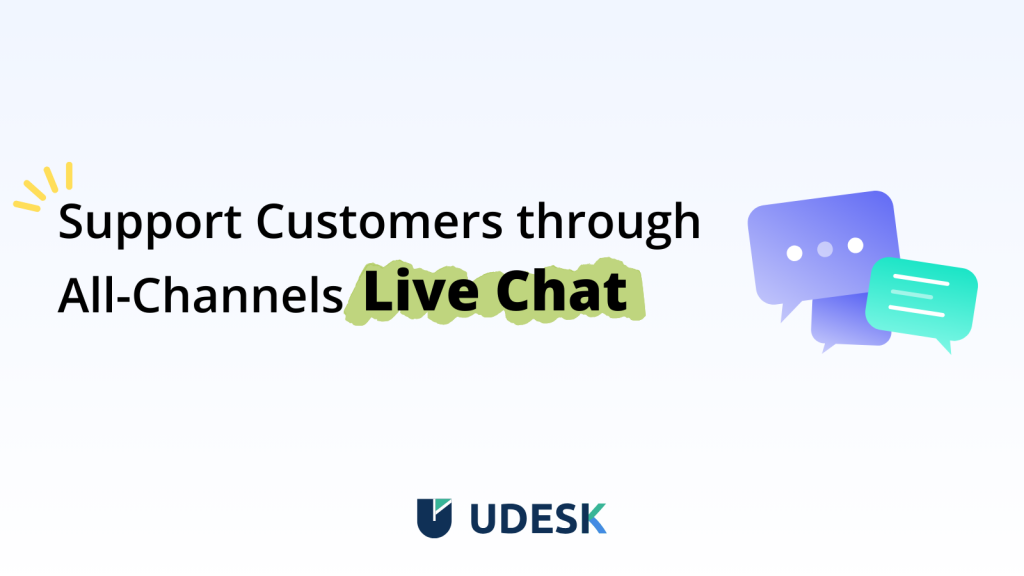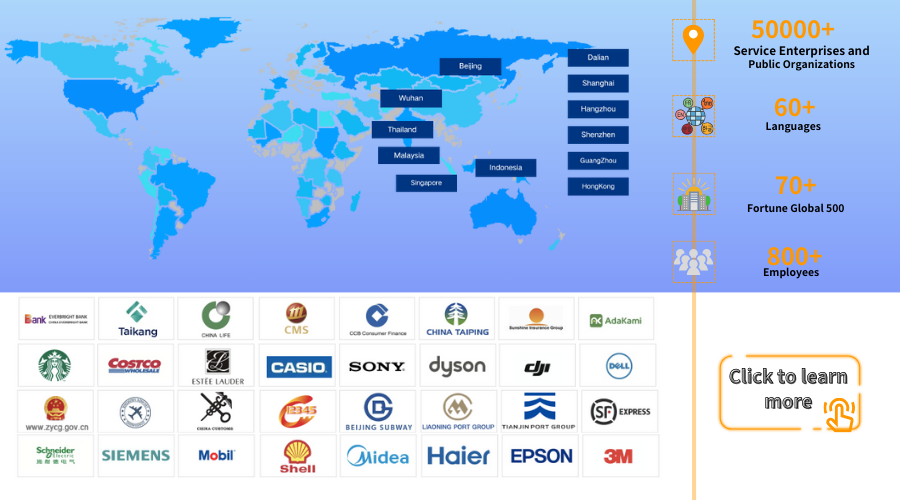Live Chat 101: Definition, Benefits, and Best Practices
Article Summary:Live chat support merges instant conversation with link sharing, data collection, and the option to preserve a complete transcript for future use, making it the perfect online customer service tool for individuals in need of immediate assistance.
Table of contents for this article
- What is live chat?
- The benefits of live chat as a support channel
- 1. Enhanced Customer Satisfaction:
- 2. Increased Sales and Conversions:
- 3. Competitive Edge:
- 4. Cost Efficiency:
- 5. Valuable Insights:
- Incorporating live chat support into your customer service offering
- l. Who will receive live chat support?
- 2. Where is live chat most valuable?
- 3. How will you balance your support channels?
- 4. How will live chat integrate with your existing help desk or CRM?
- 5. What training or resources will you need?
- Best Practices for Live Chat
- 1. Prompt Response Times:
- 2. Trained and Knowledgeable Agents:
- 3. Personalized Interactions:
- 4. Clear Communication:
- 5. Availability Across Platforms:
- 6. Proactive Engagement:
- 7. Continuous Improvement:
- 》》Take our Live Chat for a spin—for free—to see how it can work for your business.
Live chat support merges instant conversation with link sharing, data collection, and the option to preserve a complete transcript for future use, making it the perfect online customer service tool for individuals in need of immediate assistance.

Initiating live chat support is straightforward, yet ensuring its longevity and effectiveness as a key component of your customer service approach requires careful consideration and dedication. Keep reading to understand the significance of live chat support, how to integrate it into your support arsenal, and the essentials for providing an exceptional live chat support experience.
What is live chat?
Live chat refers to an online communication application that enables instant messaging between a customer and a customer service representative or salesperson. It is typically embedded within a company’s website, mobile application, or social media platforms, allowing for real-time interaction that is both text-based and synchronous. Unlike email or phone support, live chat facilitates immediate dialogue, mirroring face-to-face conversations but with the convenience of digital accessibility.
The benefits of live chat as a support channel
The integration of live chat into customer service strategies provides several advantages that can significantly impact a business’s bottom line and customer experience.
1. Enhanced Customer Satisfaction:
Live chat provides instant support to customers, addressing their queries and concerns without the delays inherent to email correspondence or the frustration of navigating phone menus. This immediacy can lead to higher satisfaction rates as customers feel their time is valued and their issues are promptly resolved.
2. Increased Sales and Conversions:
By offering real-time assistance, live chat can guide customers through the purchasing process, answer product-related questions, and alleviate doubts that might prevent a sale. This proactive engagement can increase conversion rates and encourage repeat business.
3. Competitive Edge:
In a marketplace where consumers have abundant choices, providing live chat can differentiate a company from its competitors. Offering superior customer service through live chat can be a deciding factor for customers when choosing between similar products or services.
4. Cost Efficiency:
Live chat can be more cost-effective than traditional phone support. Agents can handle multiple chats simultaneously, reducing the need for a large customer service team and minimizing phone-related expenses.
5. Valuable Insights:
Live chat interactions provide a wealth of data that can be analyzed to improve products, services, and customer service strategies. By reviewing chat transcripts, businesses can identify common issues, track customer sentiment, and tailor their offerings to meet customer needs better.
Incorporating live chat support into your customer service offering
Introducing a new support channel to your service offering is a decision that should be carefully considered. It often involves expanding your existing resources (such as your team, their working hours, and their skill set) to provide assistance across multiple locations, which can be challenging.
Before implementing live chat support everywhere simultaneously, it’s important to consider the following questions:
l. Who will receive live chat support?
You don’t have to make chat available to every visitor. You might offer it to VIP clients or new customers.
2. Where is live chat most valuable?
Are there points in your app or sales funnel where a real-time conversation can help people get unstuck and maintain momentum? Consider providing live chat support only at those moments, at least initially.
3. How will you balance your support channels?
Look at the time and skills you have, and decide how many hours you can cover with live chat support. Compare that to the support volume you have through other channels, and decide on a sustainable mix. You won’t get it right the first time, but you can make an educated guess.
4. How will live chat integrate with your existing help desk or CRM?
The more you know about your customers and their history with you, the better service you can offer. Choose a live chat tool that will connect each conversation with what you already know about that customer.
5. What training or resources will you need?
Review your team’s backgrounds and skills, and provide them with guidance on what good chat support looks like. Giving great service through live chat is a different skill set than email or phone support.
As you integrate your new live chat support channel, begin collecting data about what is working, how customers are reacting, and where your team might need additional help to deliver the best support experience.
Best Practices for Live Chat
To harness the full potential of live chat, organizations should adhere to a set of best practices that ensure a positive and productive experience for both customers and agents.
1. Prompt Response Times:
Customers expect quick responses when using live chat. Businesses should aim to minimize wait times and have adequate staffing to handle peak periods.
2. Trained and Knowledgeable Agents:
Agents should be well-trained in product knowledge, communication skills, and problem-solving to provide accurate and helpful support. Regular training sessions can keep agents updated on new products and policies.
3. Personalized Interactions:
While efficiency is important, agents should also strive to personalize conversations. Using the customer's name, understanding their history with the company, and showing empathy can create a more engaging and humanized experience.
4. Clear Communication:
Agents should use clear and concise language, avoiding jargon or technical terms that might confuse customers. They should also ensure they understand the customer’s issue before offering a solution.
5. Availability Across Platforms:
Live chat should be accessible across various platforms, including desktop and mobile devices, to cater to customers' preferences and ensure a seamless experience.
6. Proactive Engagement:
Rather than waiting for customers to initiate contact, businesses can use live chat to proactively reach out to visitors who appear to need help, such as those spending a long time on a checkout page or frequently visiting the FAQ section.
7. Continuous Improvement:
By regularly reviewing chat transcripts and customer feedback, businesses can identify areas for improvement and refine their live chat service accordingly.
Live chat is a transformative tool in the digital customer service landscape, providing immediate, personalized, and cost-effective support. Its benefits, from increased customer satisfaction to higher conversion rates, make it an indispensable asset for businesses aiming to thrive in a competitive market. By following best practices, organizations can ensure that their live chat services not only meet but exceed customer expectations, fostering loyalty and driving long-term success.

Udesk’s Live Chat can access search engine data, customer browsing history, and product order inquiries, accurately understanding customer intentions before the conversation, and communicating proactively and efficiently.
With the AI-driven Chatbot, you can offer 24/7 online service, providing efficient and friendly customer communication.
Udesk’s Live Chat tools will help your support team meet customers where they are in the purchasing experience, leading to more questions answered and fewer abandoned carts.
》》Take our Live Chat for a spin—for free—to see how it can work for your business.
The article is original by Udesk, and when reprinted, the source must be indicated:https://www.udeskglobal.com/blog/live-chat-101-definition-benefits-and-best-practices.html
Live ChatLive Chat ToolsReal-time Chat

 Customer Service& Support Blog
Customer Service& Support Blog



